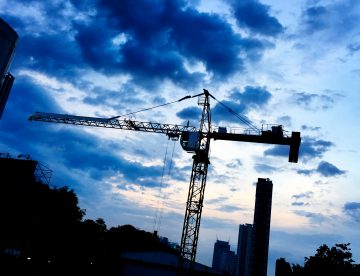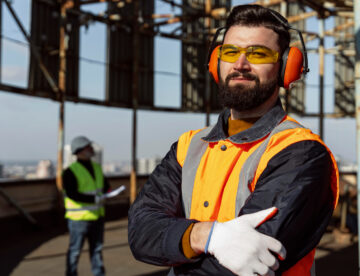
With tools and equipment in almost constant use, a construction site is generally a noisy environment.
Aside from the potential for this to cause nuisance to neighbouring communities, frequent exposure to raised noise levels can have serious consequences for workers, causing problems like tinnitus (a sensation of ringing in the ears) and hearing loss.
Find out more, including how to protect yourself from these risks in this week’s blog.
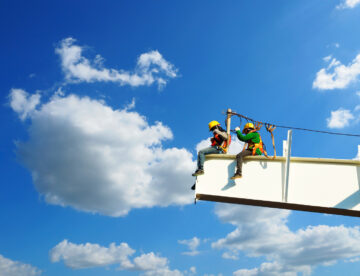
According to the Health and Safety Executive (HSE), almost one in five deaths in the construction industry involves roof work, the most common causes being falls from roof edges or through fragile surfaces.
The saddest thing about this statistic is that a great many of these accidents could have been avoided through the implementation of proper safety measures – using the correct equipment and ensuring workers receive adequate information, instruction, training and supervision. Take a moment to read this week’s blog for some key safety tips.

Tools and equipment are essential to the effective running of any construction site but, because they are used so much, they can suffer a lot of wear and tear, become damaged and eventually be unusable.
However, with proper care and maintenance, the lifespan of your tools and equipment can be extended and that’s good news for four reasons: 1) Better quality tools means better quality work; 2) It reduces costs related to repairs or replacements; 3) There will be fewer accidents/ injuries from faulty equipment; and 4) It’s better for the environment.
With so much to gain, in this week’s blog, we’re sharing some top tips for how to protect and maintain those tools.
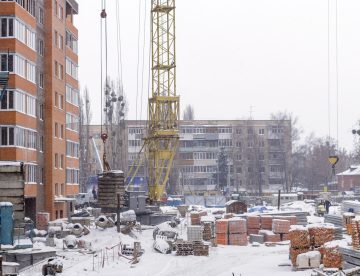
The recent cold snap is a reminder to us that working outdoors in such conditions is not exactly the most pleasant thing any of us could be doing and that, once again, it’s time for our industry to brace itself for the winter months ahead.
During these months, we all need to be aware of the potential hazards that come with harsher weather, recognise that some tasks could take longer to complete and be prepared to make adaptations when planning work activities.
If you’re working on site this winter, here’s our handy guide to surviving the cold.

If you’ve been working on a construction site in Britain for a while then it’s very likely you’ll have the had many experiences of working in rainy conditions.
While the odd shower isn’t so bad, persistent rain can result in some pretty unpleasant working conditions on site (and in other outdoor working environments). As well as posing a number of risks associated with workers getting cold and wet, rain can increase the chances of people falling victim to other hazards like slips, falls and accidents caused by poor visibility.
As we’ve had a few Autumnal downpours over the past few days, in this week’s blog, we’re talking about the dangers associated with working in rain and what steps can be taken to stay safe.
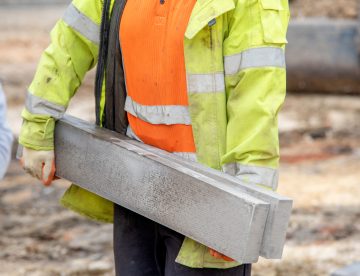
Lifting and moving heavy objects are part of normal working life on construction sites but, when managed badly, these everyday tasks can lead to damaging musculoskeletal disorders that leave workers struggling to stand, walk or sit down. For some, the injuries result in them having no option but to stop working in the industry altogether.
Because the health of workers can be affected to such a serious degree, inspectors from the Health and Safety Executive will be carrying out 1000 site inspections in October and November, particularly checking how workers are moving heavy or bulky materials. Read on for more details.
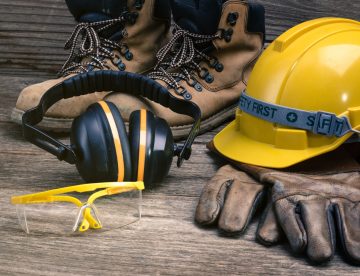
Over the past two years, the term PPE has become a big part of our everyday language, most often associated with the kind of face coverings we’ve all used during the coronavirus pandemic.
But, now that COVID seems to have moved out of the media spotlight, perhaps it’s a good time to remember that PPE (personal protective equipment) has always meant much more to the construction industry.
In this week’s blog, we’re looking at five key areas of the body that especially require protection (head, face/eyes, ears, hands and feet) and sharing some tips on how to select and properly use the necessary PPE.

Statistics from the Health and Safety Executive show that there has been an average of 61,000 non-fatal injuries in construction each year and that during the period 2020-21 there were 39 fatal injuries. Although that might not seem a large number, it’s 4 times the rate for all industries!
Whilst falls from height and slips, trips and falls feature among the most common causes of injury, every year thousands of people are injured due to hazards arising from the equipment they’re using on site. Take a look at this week’s blog for six common dangers to watch out for.
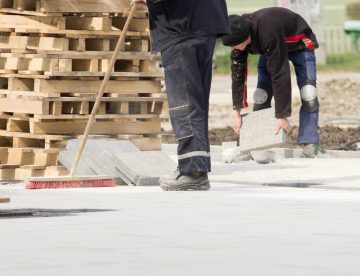
Since the coronavirus pandemic, we’ve all become very used to there being an enhanced focus on cleanliness and sanitisation – at home, while out and about and where we work. While this brought additional procedures and policies into play, even before COVID, most workplaces had some rules around maintaining a clean, tidy and well-organised environment. For construction, this is absolutely crucial in order to maintain site safety, prevent accidents or injuries and help to protect the environment.
Here at Sheriff Construction, we’ve made it clear that good housekeeping on site is everyone’s responsibility and there are key actions/ procedures that our site operatives should be undertaking on a continual basis. As a reminder, this week’s blog features the Sheriff guide to keeping things clean.

